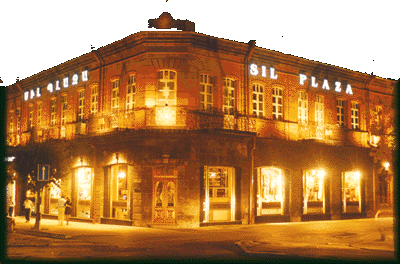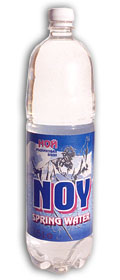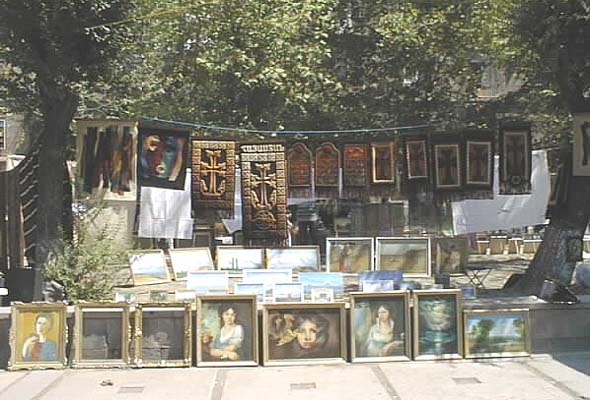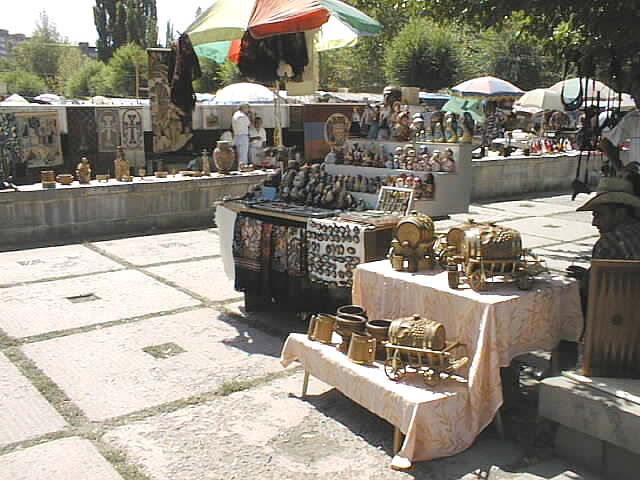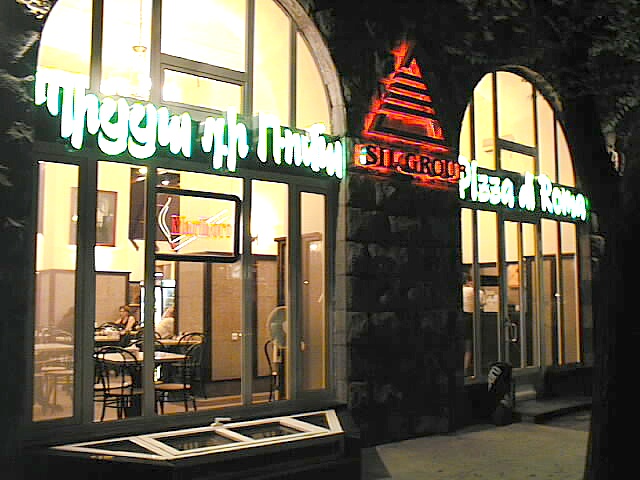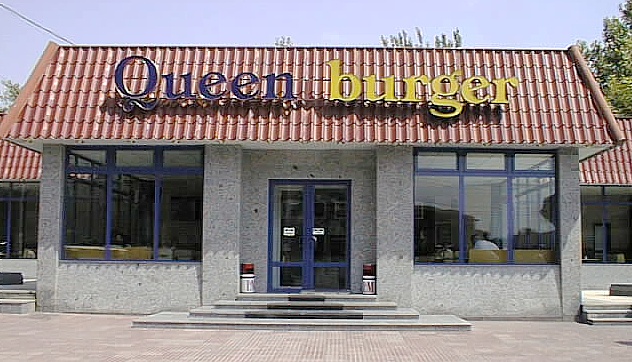III. Economy
- Rivers & Lakes
- Climate
- Natural Resources
- Plants & Animals
- Population Characteristics
- Political Divisions
- Principal Cities
- Religion
- Language
- Education
- Culture
III. Economy
- Agriculture
- Mining
- Manufacturing
- Energy
- Currency & Banking
- Commerce & Trade
- Labour
- Transport
- Communications
- Executive & Legislature
- Political Parties
- Judiciary
- local Government
- Health & Welfare
- Defence
- International Organizations
- Invasion By Foreign Powers
- Independence
Agriculture is the largest sector of the Armenian economy, producing about one quarter of the countryís net material product in 1991 and nearly 40 per cent in 1992. It is also the largest employer in Armenia; 41 per cent of the total labour force was employed in agriculture and forestry in 1997. Principal crops include wheat, potatoes, tobacco, vegetables, grapes, and other fruits. Agriculture is highly dependent on irrigation, especially in areas near the Aras in the republicís south. Local food production does not satisfy domestic needs, however, so Armenia must import large quantities of food from abroad. During the Soviet period, Armenia imported about 60 per cent of its bread and nearly two thirds of its dairy products from other republics. The economic blockade by Azerbaijan and the civil war in Georgia caused food supplies to greatly diminish, but in contrast to industrial production, agricultural output increased considerably in the early 1990s. The increase in domestic food production was caused in part by the privatization of land holdings, which began in 1991, and resulted in the transfer of 80 per cent of land and more than 85 per cent of collective farms into the private sector.
Deposits of copper, zinc, bauxite, lead, molybdenum, marble, basalt, and granite are exploited on a small scale, and salt and gypsum are also mined. In 1991 production of gypsum was 172,000 tonnes and 103,000 tonnes of unrefined salt were produced. A joint-venture deal relating to gold mining has been agreed with a Canadian company on the development of a US$12 million processing plant in Ararat.
Prior to independence most production was in the light industrial sector, with some heavy industry associated with the metallurgical and chemical industries. There was also a large defence industry during the Soviet era. The economic crisis led to a substantial fall in manufacturing output, and many enterprises engaged in the defence industry have moved into different fields. Armenia has not benefited from a great deal of foreign investment, largely due to its location and the unsettled politics of the region.
The industrial sector suffered greatly from the economic blockade imposed by Azerbaijan in 1991, which resulted in severe shortages of natural gas, oil, and other energy sources. In 1994 Armenian officials announced their decision to restart the power plant at Medzamor, the only nuclear power station in the Transcaucasia region, in order to compensate for the diminished energy supply. The plant had been shut down after northern Armenia suffered a devastating earthquake in 1988, although it was not damaged. The government of Azerbaijan protested against the announcement that the plant would be reopened, because of the possibility that it would be used to produce nuclear weapons. The Medzamor nuclear plant reopened in 1995, in spite of safety fears, and in the first six months of 1996 it was responsible for an increase of almost 40 per cent in the country's nuclear-generated electricity. Potential sites for commercial extraction of oil and gas were identified in the late 1990s.
After the breakup of the USSR, Armenia continued to use the Russian rouble as its currency. Beginning in mid-1993, however, the Central Bank of Russia refused to accept roubles printed before that year. This action caused a massive inflow of roubles to Armenia and other former Soviet republics where the rouble was still allowed to circulate. Inflation accelerated greatly as a result of the influx of old roubles, which were worthless in Russia. The Central Bank of Russia demanded strict control of the new rouble, prompting Armenian leaders to issue a separate currency, called the dram, in November 1993. The dram was originally issued at a rate of 200 roubles per dram (509.38 drams equal US$1; 1999).
Trade with the former Soviet Union used to play an important part in the economy, and Armenia enjoyed a trade surplus until 1987, since when it has been in deficit. By 1997 the Commonwealth of Independent States (CIS) accounted for 40 per cent of exports, and was the origin of some 33 per cent of imports. Other trade partners include Belgium, Iran, and the United States. Leading exports include precious and semi-precious stones, precious metals, base metals, and machinery; food products and mineral products are leading imports.
In 1997 the labour force numbered some 1,371,000, of which 41 per cent were employed in agriculture and forestry, 21 per cent in industry and construction, and 38 per cent in the services sector.
There are approximately 7,700 km (4,785 mi) of road, of which 97 per cent is paved. It was estimated that 40 per cent of the roads were in need of repair in the late 1990s, and a US$35 milllion project to build 1,420 km (882 mi) of new roads, has received support from multilateral creditors. Rail links between Iran, Turkey, and Russia via Georgia are slow, and the United Nations funded the construction of a rail bridge between Tbilisi and Yerevan which opened in 1996. There are direct air communications with several destinations in Europe; the government considers air transport an important priority, and proposes to equip the national carrier, Air Armenia, with modern aircraft.
The telecommunications system is outdated and unreliable; there were some 583,500 lines in use in the early 1990s. International calls, however, are connected using better quality switching equipment and satellite access. Newspaper circulation and the number of titles produced have been affected both by the adverse economic climate and through closures by a government sensitive to criticism. Ownership of television receivers was estimated at 722,000 in 1993. Television broadcasting is subject to a state monopoly, although there is one radio station in the private sector.
Armenian Production
Sil Plaza
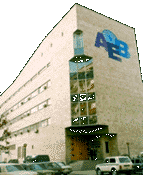
Armeconombank
Armenian Economy
Development Bank
Armenian Spring Water
Venesaj
Venesaj
Venesaj
Pizza De Roma
Queen Burger
